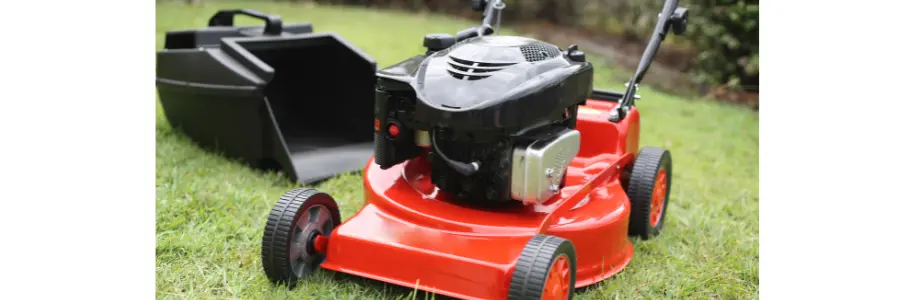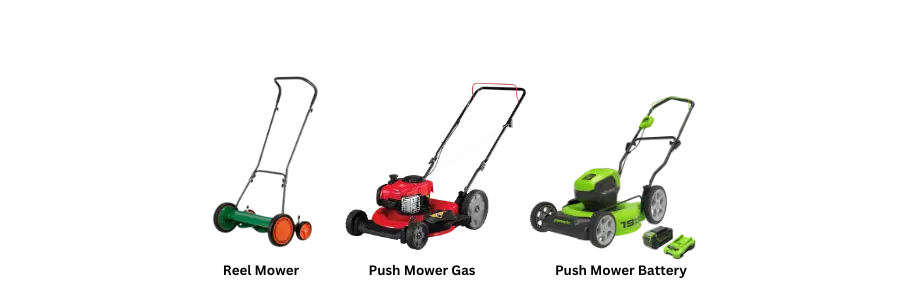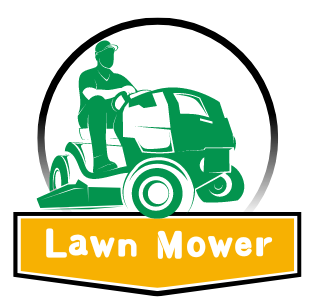If you’re a homeowner, maintaining a well-manicured lawn can be a source of satisfaction. However, the variety of lawn mowers available in the market can be confusing and overwhelming. That’s why understanding the difference between self-propelled and push mowers is crucial. Let’s explore how these mowers work, the different types, their advantages and disadvantages, factors to consider when choosing, and practical comparisons to help you find the ideal mower for your lawn maintenance needs.
Difference between Self Propelled and Push Lawn Mower?
Let’s start by understanding how these two types of mowers function:

⚡Push Lawn Mower
This classic mower operates with manual force to drive it forward. As you push the mower, the blade rotates, trimming the grass to your desired length. Push mowers are straightforward in design, relying on the operator’s physical effort for effective operation.

⚡Self Propelled Mower
Conversely, self propelled mowers have a built in transmission that drives the wheels, enabling the mower to move forward effortlessly.
The operator simply steers the mower in the desired direction, eliminating the need for manual pushing. Self propelled mowers are favored by those seeking a more convenient mowing experience.
If you own a self propelled lawn mower, you might occasionally face sputtering issues. For expert tips on resolving this problem, check out the article, ‘Fixing Lawn Mower Sputtering: The Ultimate Guide!‘
Types of Lawn Mower
Self Propelled Mowers

⚙️Front Wheel Drive:
With the self-propelled front drive mower, it’s like having your own personal assistant. As you guide it along, the front wheels lead the way, effortlessly gliding over the terrain. It’s smooth sailing, no pushing is required! making them ideal for smaller, flatter yards. They offer easy maneuverability and are more affordable than rear-drive models.
⚙️Rear Wheel Drive:
Rear wheel drive mowers are known for their durability and strength, making them the reliable workhorses of the lawn mowing industry. They’re built for tackling tough terrain and providing superior traction, especially on slopes and uneven surfaces. With variable speed control, you can mow at your own pace, making it easier to navigate tricky landscapes. While they may cost a bit more upfront, their durability and performance make them worth the investment for larger yards or challenging lawns.
Push Lawn Mowers

⚙️Motorized:
These mowers feature a motor that spins the blade, requiring the operator to manually push the mower forward. They are lightweight and easy to maneuver, making them suitable for smaller yards.
⚙️Electric Motors:
Powered by electricity, these mowers offer a quieter and eco-friendly alternative to gas powered mowers. They are ideal for smaller yards and require minimal maintenance.
⚙️Reel Mowers:
Also known as cylinder mowers, these manual mowers feature a rotating cylinder with blades that cut the grass like scissors. They are environmentally friendly and provide a clean, precise cut.
Self Propelled vs Push Mower: Pros and Cons
| Aspect | Push Lawn Mower | Self Propelled Mower |
| Work Efficiency | – Requires manual effort to push, leading to a potentially more physically demanding experience. – Ideal for smaller yards with straightforward terrain. | – Mechanically propels itself forward, reducing physical strain on the operator. – Suitable for larger yards or uneven terrain. |
| Speed Control | – Speed is determined solely by the user’s pushing force. – Limited to a fixed pace, which may result in slower mowing. | – Offers variable speed control, allowing users to adjust the pace based on preferences and terrain conditions. – Enables faster and more efficient mowing. |
| Maneuverability | – Lightweight design makes it easy to maneuver and navigate around obstacles. – Suitable for tight spaces or areas with numerous obstacles. | – Heavier due to propulsion gearbox, which may affect maneuverability, especially for users with limited strength. – Better suited for open spaces with minimal obstacles. |
| Initial Cost | – Generally more affordable compared to self-propelled mowers. – Provides cost-effective options for budget conscious consumers. | – Tends to be more expensive upfront due to added features and mechanisms. – Higher initial investment may deter some buyers. |
| Engine Power | – Smaller engines may struggle with tall or dense grass, requiring more effort from the operator. – Suitable for basic lawn maintenance tasks. | – Larger engines provide increased power and performance. – Capable of handling tougher mowing conditions and thicker grass with ease. |
| Terrain Versatility | – Limited traction on uneven or hilly terrain, which may result in challenges navigating slopes or rough areas. – Best suited for flat or gently sloping landscapes. | – Offers better traction and stability on various terrains, including slopes or uneven ground. – Provides greater versatility for mowing on challenging landscapes. |
Self Propelled vs Push Mowers: Which Should You Choose?
When choosing between a self propelled Vs push Mower, it is important to consider these factors:
✔️Yard Size:
Consider the size of your yard and the amount of time you’ll spend mowing each week. Self propelled mowers are ideal for larger yards, while push mowers are suitable for smaller areas.
✔️Terrain:
Assess the terrain of your yard, including any slopes or rough areas. Self propelled mowers offer better traction on uneven terrain, while push mowers may struggle on hilly landscapes.
✔️Budget:
Determine your budget for purchasing a mower and consider the long term investment. While self propelled mowers may have a higher upfront cost, they can provide added convenience and efficiency over time.
✔️Physical Ability:
Take into account your physical ability and comfort level with manual labor. If pushing a mower for extended periods is challenging, a self propelled mower may be the better option.
Recommendation for Different Scenarios
➡️Scenario 1: Large Lawn Area
In the case of a large lawn with extensive grassy areas, opting for a self propelled mower can bring about the convenience of hands free operation. This significantly reduces operator fatigue, particularly during prolonged mowing sessions.
➡️Scenario 2: Small Yard with Obstacles
For a compact yard filled with various obstacles like trees, flower beds, and tight corners, a nimble push mower proves to be invaluable. Its lightweight design enhances maneuverability and control, enabling precise trimming around obstacles.
➡️Scenario 3: Uneven Landscape
When dealing with rugged or uneven terrain, such as hills or ditches, a self propelled mower equipped with rear wheel drive stands out. It provides superior traction and stability, ensuring safe and efficient mowing even in the face of challenging landscapes.
Find Your Ideal Mower: Self Propelled vs Push Mower
| Aspect | Push Lawn Mower | Self Propelled Mower |
|---|---|---|
| Work Efficiency | 5/10 | 9/10 |
| Speed Control | 3/10 | 7/10 |
| Maneuverability | 6/10 | 4/10 |
| Initial Cost | 8/10 | 5/10 |
| Engine Power | 6/10 | 9/10 |
| Terrain Versatility | 4/10 | 8/10 |
Final Words
In summary, whether you go for a push mower or a self propelled one boils down to what works best for you and your lawn. If you’ve got a big yard or it’s a bit rough and tumble out there, a self propelled mower could be the way to go for easier mowing. But if you’re into getting your hands dirty and your yard’s on the smaller side with not too many obstacles, a push mower might do the trick just fine. Just think about what matters most to you and what your lawn needs and you’ll make the right choice.

